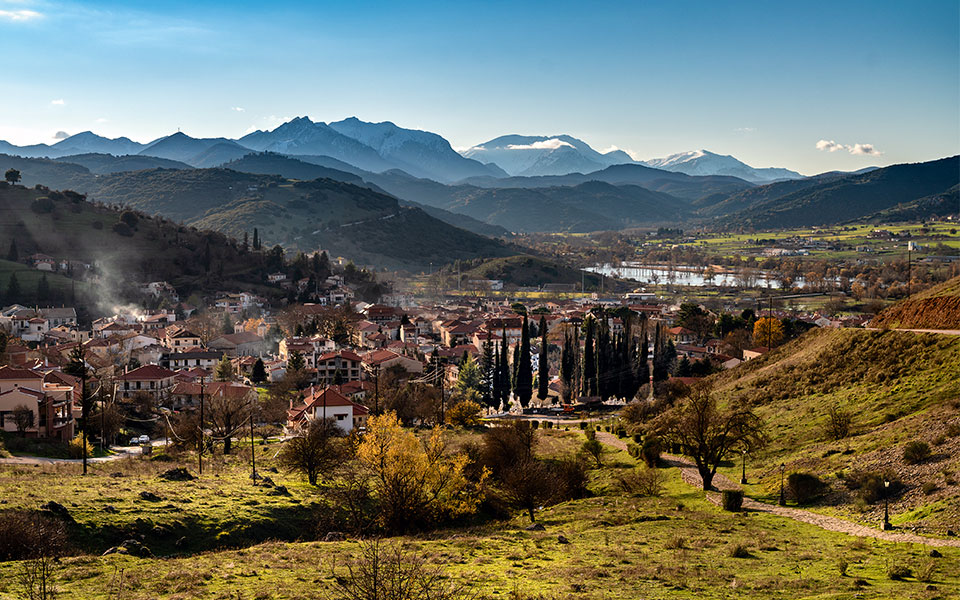It takes time to process everything you see on this brief, view-filled one-hour journey; the train traverses villages, a valley, a gorge, and lowlands, ascends slopes, runs alongside footbridges, skirts waterfalls, and encounters caves and tunnels carved into the rock. Its companion on most of the trip is a fast-flowing river that flows down from the highlands of the Achaia region towards the sea. Yet perhaps the most impressive aspect of this journey isn’t what you see but what you come to realize: how, using the simplest of tools and their own sheer willpower, people were able to tame a wild landscape that was once impenetrable.
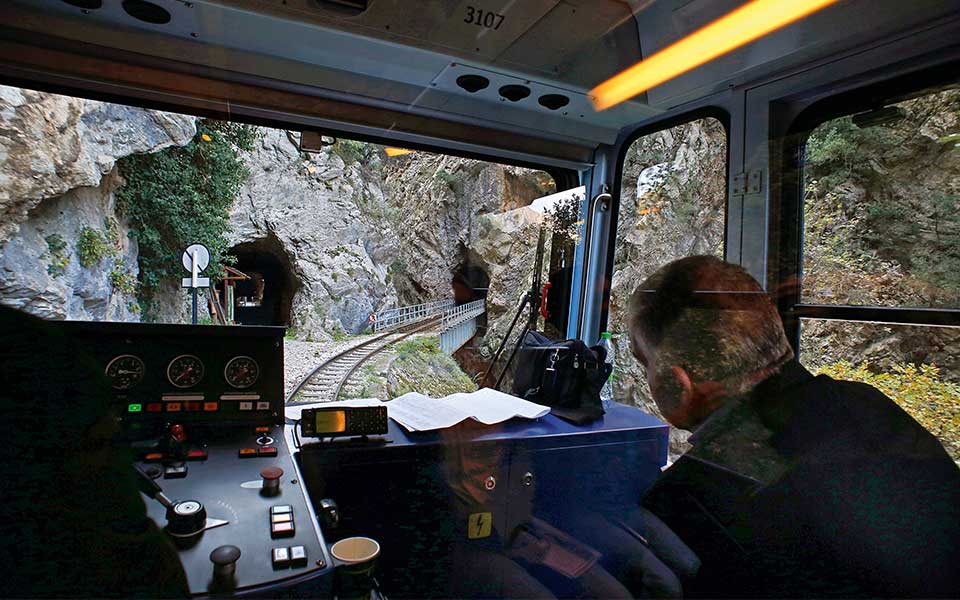
© Nicholas Mastoras
It is 11 o’ clock in the morning, and we are at the Kalavryta railway station, hoping to catch the Odontotos to Diakopto. The train, composed of three small but comfortable wagons, is itself fairly new and moves slowly (about 30 km/hour, slowing to just 10 km/hour on the cog railway section), which allows us to enjoy the route. For the first twenty minutes, we move in almost a straight, traversing the Vouraikos Gorge, with the river on our left. This year’s inclement weather has ensured that the oak trees and the rest of the vegetation are still sporting autumn colors. Only the light layers of snow on the railway track and the bare branches of the enormous plane trees along the banks of the river remind us that we are actually deep in the heart of winter.
After our first stop at Kerpini, the scenery begins gradually to change; we cross the first bridge and, as we approach the impressive grey rocks surrounding the gorge, we can feel the incline. As we approach Zachlorou, the driver is very careful because, as he tells us, there are often people standing on or walking along the lines, despite the warnings. Many are hikers who’ve reached here from Kalavryta and now want to catch the train from this station, while others are looking for the path that leads to the Great Cave Monastery. After a brief stop, the train sets off again.
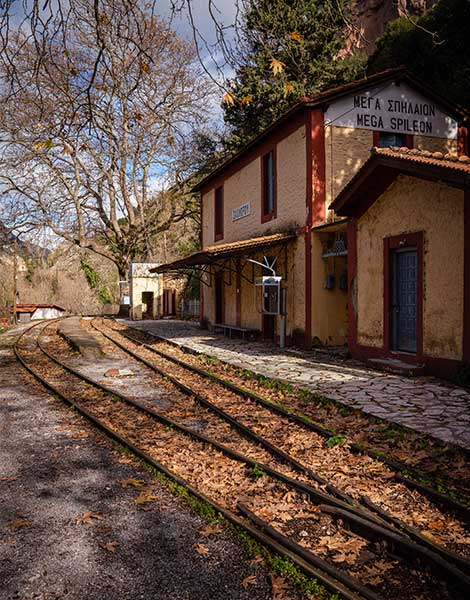
© Nicholas Mastoras
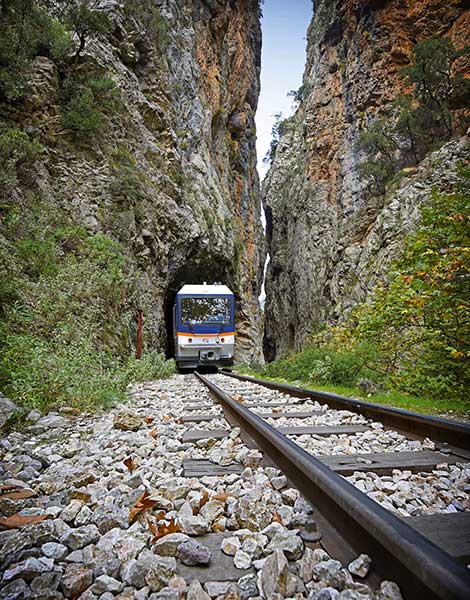
© Visualhellas.gr
We can see the cogs in the middle of the tracks and it’s clear that the Odontotos is now using them to keep its grip, first as it ascends, and then as it descends immediately after, tapping the brakes to bring this 60-ton train safely downhill. Since the tracks themselves measure just 76cm in width, it often feels that we are floating above the river.
The landscape changes more rapidly from now on. Ahead we can see the famous Portes, the narrowest section of the course, which owes its name (“Portes means “Doors” in Greek) to large metallic gates at either end of the tunnel which were shut at night, to prevent animals and people from entering. We’re told, to our astonishment, that this tunnel was made using nothing more than chisels.
Inaugurated in 1896, the Odontotos was used to transport grain from Kalavryta to Athens. This project, the brainchild of Charilaos Trikoupis, is considered one of the greatest achievements of its time, given that all construction was done by hand, without any mechanical or technological means.
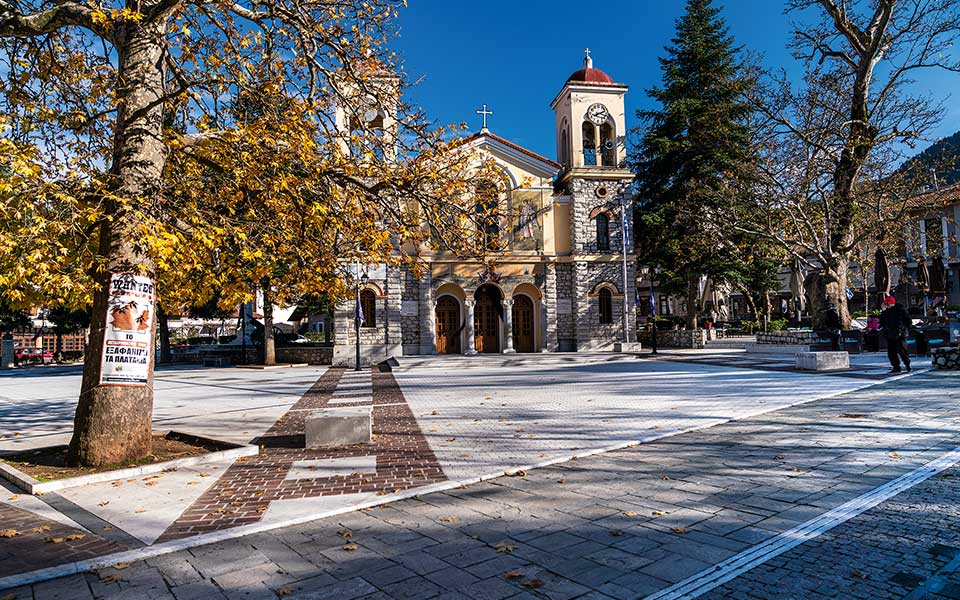
© Nicholas Mastoras
Almost 30 minutes have passed, and we are flanked by vertical limestone rocks on the right, and the raging river on the left. The deafening sound of rushing waters indicates that we are arriving at Sifoni, the impressive waterfall created by the erosive action of the water carving into the rocks year upon year.
We’re soon exiting the gorge, and the surroundings seem much brighter now. We’re now looking intio an impressive cavern whose stalagmites fire the imagination. The locals call this cave “Dikastirio” because they say the rock formations resemble a judge’s bench with two figures standing before it, the plaintiff and the accused.
Soon, the river is on our left again. The train is now traversing the Achaia lowlands, a region full of olive and orange trees. At our penultimate stop, Niamata, our gazes are drawn to the horizon, where the shades of blue become deeper. The Gulf of Corinth welcomes us, as do the houses on the outskirts of Diakopto.
Info: The ride on the Odontotos lasts one hour and tickets cost €9.50 one way. More information can be found at odontotos.com. On the first Sunday in May, the Kalavryta Mountaineering Club organizes the annual Panhellenic Crossing of the Vouraikos Gorge. It is a celebration, especially loved by locals, that has unfortunately decreased in size over the years, according to Club President Charilaos Ermeidis.
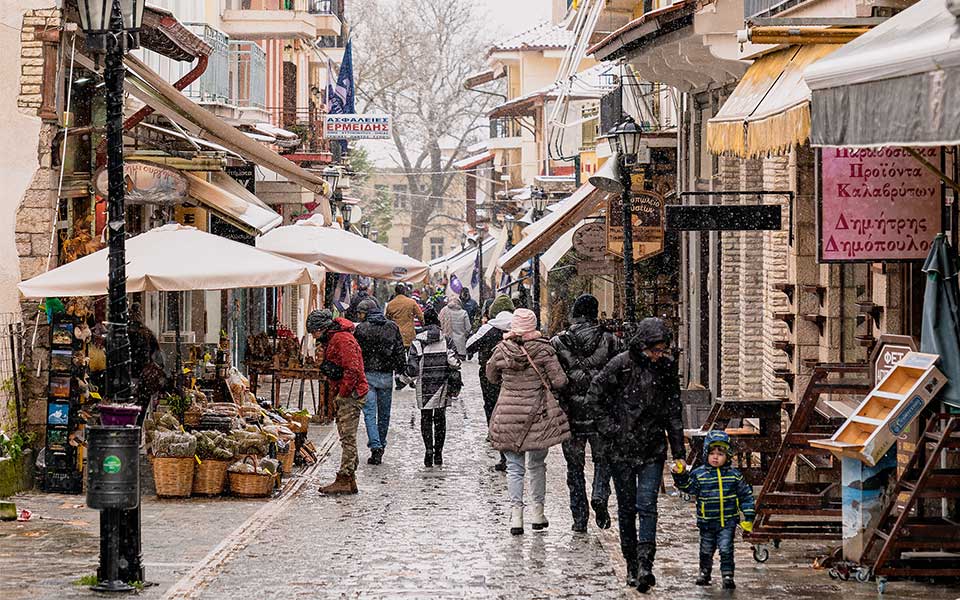
© Nicholas Mastoras
Kalavryta is more than just the Odontotos
The heart of Kalavryta is the pedestrianized walkway known as 25th Martiou Street. This is where you’ll find all the town’s shops, restaurants, cafés, stores selling local products and small souvenir shops. Tourist services – mostly those related to food – have adapted to accommodate weekend visitors and those headed to the ski center, and so there are many places that are closed during the week. The region’s gastronomic highlights include local meats served with handmade pasta, beans from the nearby Feneos area, and the famed Kalavryta feta (a PDO product).
Whether you’re an adrenaline junkie or simply in search of unique travel experiences, the area surrounding Kalavryta offers a plethora of options for a jam-packed weekend of fun.
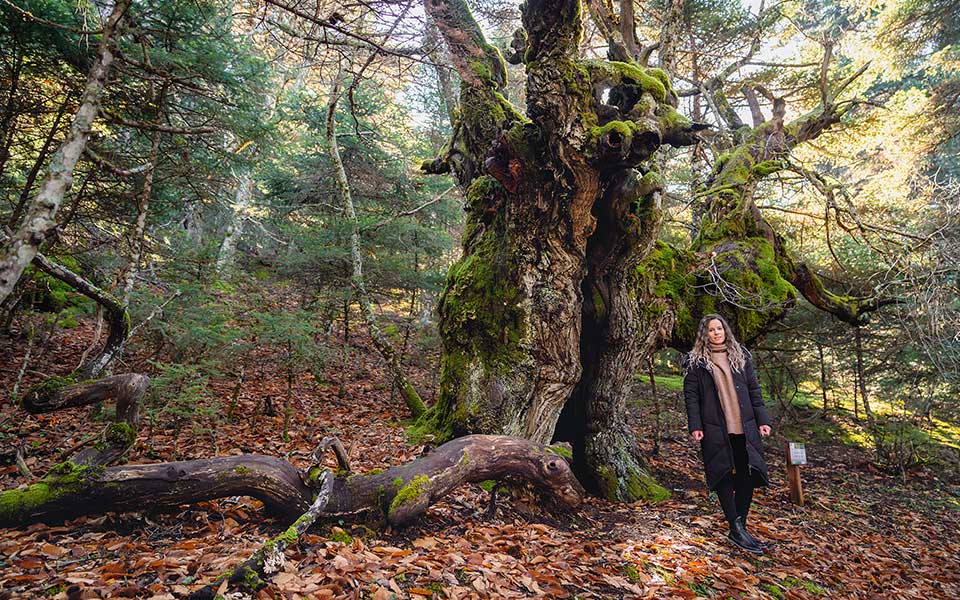
© Nicholas Mastoras
Walking the Chelmos-Vouraikos Geopark
Together with Elena Koumoustou, environmentalist MSc., deputy director – coordinator of the Chelmos-Vouraikos Management Body, and the members of her team, we wandered around an area of outstanding natural beauty that’s been designated an “Aesthetic Forest.” We were on a portion of the “Kalavryta – Ski Center – Neraidorahi – Kato Lousoi” path, a walkway that measures a total of 17 kilometers. Access to this path can be had from Keramidaki in Kalavryta, or from Valvousi. For the first hour and ten minutes, until we reach Kastro, we walk nearly parallel to the stream called Kerasia. The uphill segment, almost three kilometers in length, features an average incline that’s perfect even for novices.
We enjoy the natural beauty of the surroundings as we walk through the forest, a combination of fir, black pine, whitebeam and kermes oak trees, interspersed with centenarian chestnut trees. The surrounding vegetation is thick, but the path is well maintained and clearly signposted. Every now and then, we come across small clearings, offering a different view of the forest. In fact, if you look carefully, you’ll notice that salamanders and tree frogs discreetly following your every move. After Valvousi, the route heads east until Xerokampos (1 hour and 20 minutes). The entire route is great for mountain biking as well, although it is more accessible in this first section before it continues to the ski center and then descends to Neraidorahi and heads towards Apano Lithari. (The pathway from Keramidaki to the ski center is designed specifically to host environmental events and programs, and is often visited by schools.) The pathway then runs west, terminating at the village of Kato Lousoi, important in ancient times, where you can find the ruins of the Sanctuary of Artemis Hemera.
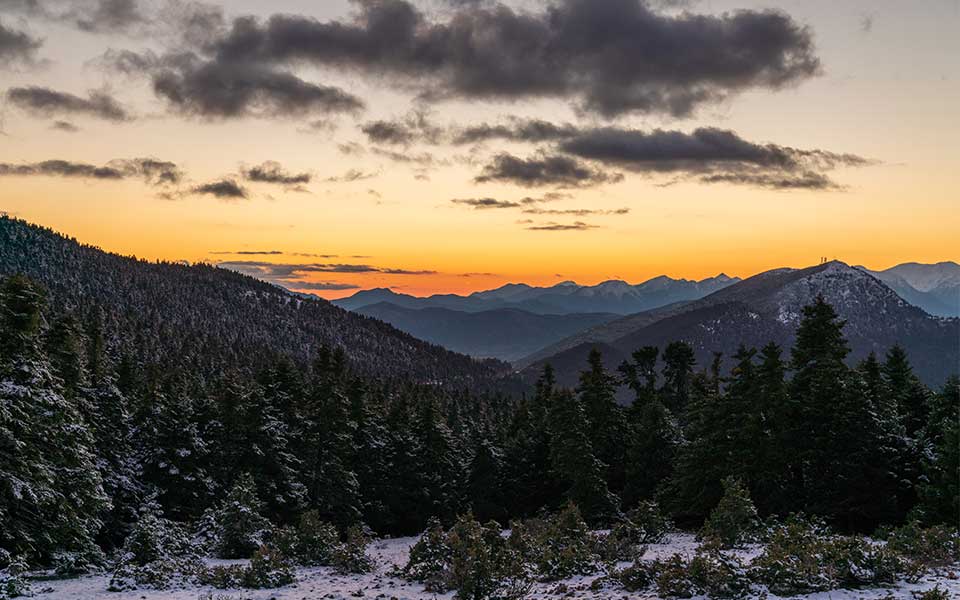
© Nicholas Mastoras
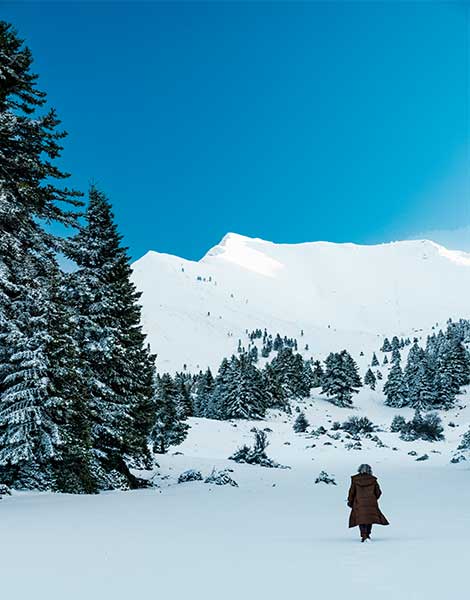
© Nicholas Mastoras
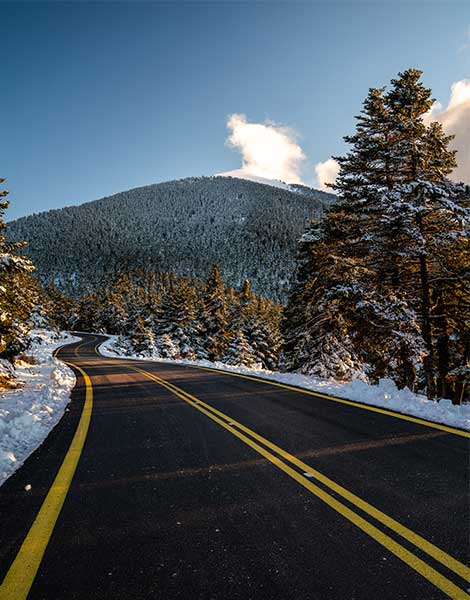
© Nicholas Mastoras
The Chelmos-Vouraikos National Park covers 544 square kilometers and includes four Natura 2000 areas: Mount Chelmos – Waters of Stygos; Vouraikos Gorge; the Kalavryta Aesthetic Forest; and Kastria Cave. It is part of the European Geoparks Network (EGN) and the Global Geoparks Network (GGN), and its rich variety of ecosystems creates ideal conditions for more than 1000 species, five of which are endemic to Chelmos. The Globularia stygia Orph is one these; it’s a woody plant species included in the European Prioritised Action Framework, a conservation effort of the European Union.
The Kalavryta Ski Center, in operation since 1988 and just 14 kilometers from the town of Kalavryta, is located on the northwestern slope of Chelmos, at elevations ranging from 1700 to 2340 meters. It features seven ski lifts and 12 slopes for all levels, as well as SnowPark, located at 1850 meters in Vathia Lakka, the only snowboarding park in the country. The chalet serves beverages, snacks and daily specials.
There are several reputable companies based at the ski center so you can get ski and snowboarding lessons or rent the equipment you need. These include: 4 Seasons Outdoor (Tel. (+30) 26920.291.45); Altitude (Tel. (+30) 694.078.1381); and RTM Chelmos (Tel. (+30) 26920.223.13). Individual lessons cost approximately €40/hour. If skiing or snowboarding isn’t for you, you might want to try a ride through the snowy wonderland on a snowmobile. A team representative from Snowmobiles Kalavryta (Christos Panagopoulos, Tel. (+30) 697.339.5916) will be your guide on a unique mountain tour.
Info: Kalavryta Ski Center, Tel. (+30) 26920.244.51, 26920.244.52, kalavrita-ski.gr. Tickets cost €28 for all slopes on weekends and holidays, and €18 during the week.
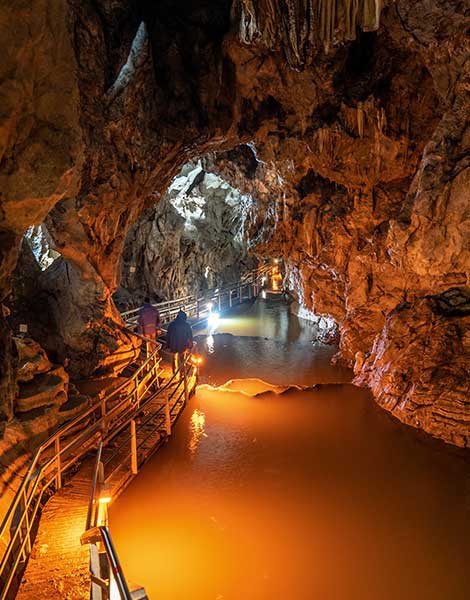
© Nicholas Mastoras
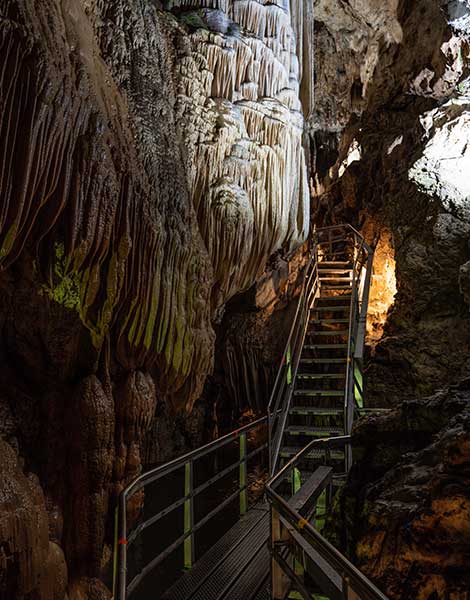
© Nicholas Mastoras
At a distance of almost 17 kilometers from Kalavryta, the village of Kastria is home to the Cave of the Lakes, a unique natural creation featuring 13 cascading lakes of various sizes and shapes, three different levels and a steady year-round temperature of 16-17°C. Around 1980 meters of the cave have been explored, though at present only 500 meters are open to visitors. Fossilized bones of various animals have been found here, as well as important archaeological and anthropological finds (including pottery and tools) dating from Neolithic, Early Helladic and Middle Helladic times. A contemporary multi-space will soon operate just outside the cave, featuring, among other things, a series of experiential narratives, various exhibitions, innovative events and a reading room.
Info: Cave of the Lakes, Kastria, Tel. (+30) 26920.310.01, 26920.31633, kastriacave.gr. Open daily from 09.30 to 16.30. Entrance: €9
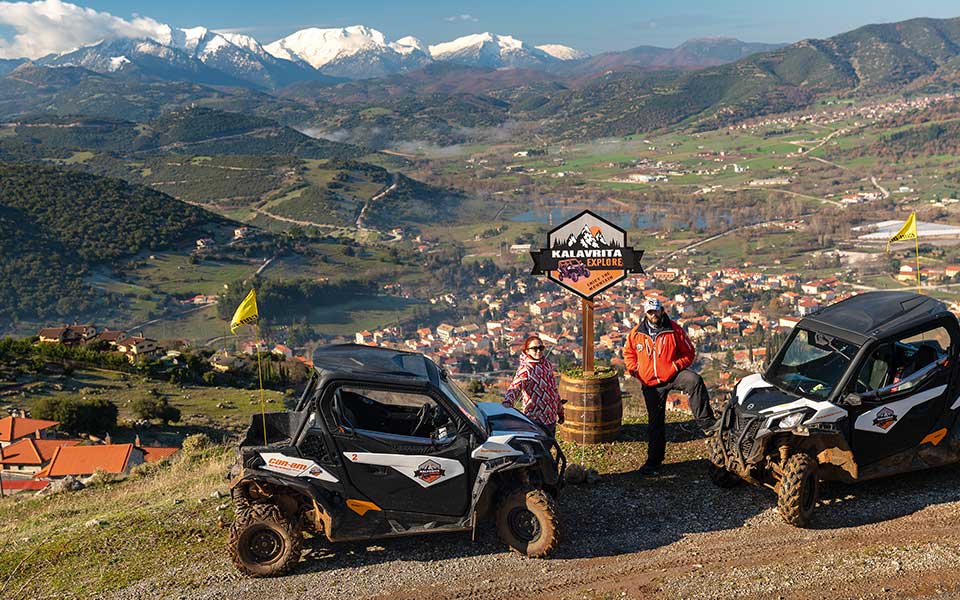
© Nicholas Mastoras
From Kastro to Korakofolia in a buggy
A journey in a buggy offers a different type of experience in nature, one that combines adventure with a sense of outdoor freedom. We chose the circular Kastro-Korakofolia-Kastro route that runs 24 kilometers and takes approximately two hours to cover. Starting from Kalavryta, the route follows the Vouraikos River and continues along a dirt road through the fir forest. Just before Kastro, you’ll make a stop so you can admire Kalavryta from above before continuing the ascent towards Profitis Ilias, which sits at an altitude of 1070 meters and offers amazing views of the gorge. Your return trip is an easy descent.
Info: Kalavryta Explore, Ethnikis Antistaseos (Vironos and Kommenou), Kalavryta, (+30) 26920.227.43. The cost of renting a two-person buggy is €130.
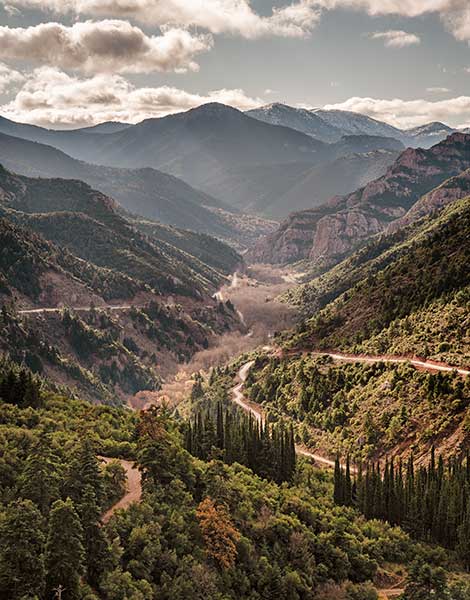
© Nicholas Mastoras
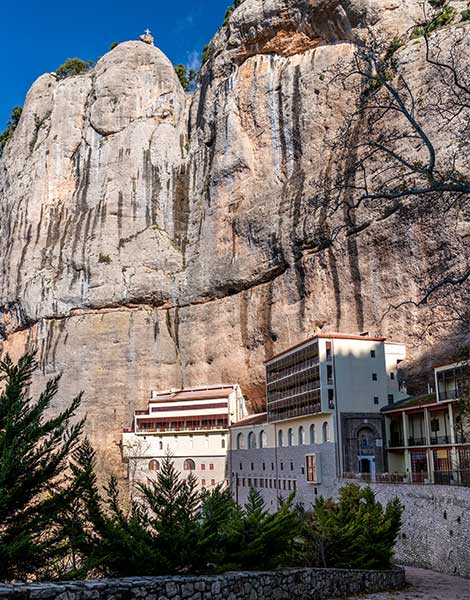
© Nicholas Mastoras
Pilgrimage to the Great Cave Monastery
This historic monastery complex, nestled at a height of 900 meters above the Vouraikos Gorge, is just 10 kilometers from Kalavryta. Often referred to as the “Meteora of the Peloponnese” it seems attached to the rock, while the monastery’s katholikon is quite literally carved into the rock. According to tradition, the monastery was built in AD 362 by the monks Simeon and Theodore from Thessaloniki, in the location where an icon of the Virgin Mary painted by Luke the Evangelist was found. It’s worth visiting the museum here; there are exceptional manuscripts, wooden iconostases and bema doors, icons, marble sections of the monastery’s original katholikon, more than 3000 books and other important religious artifacts.
Info: Great Cave Monastery, Tel. (+30) 26920.231.30, open daily from 08.00 until sunset.
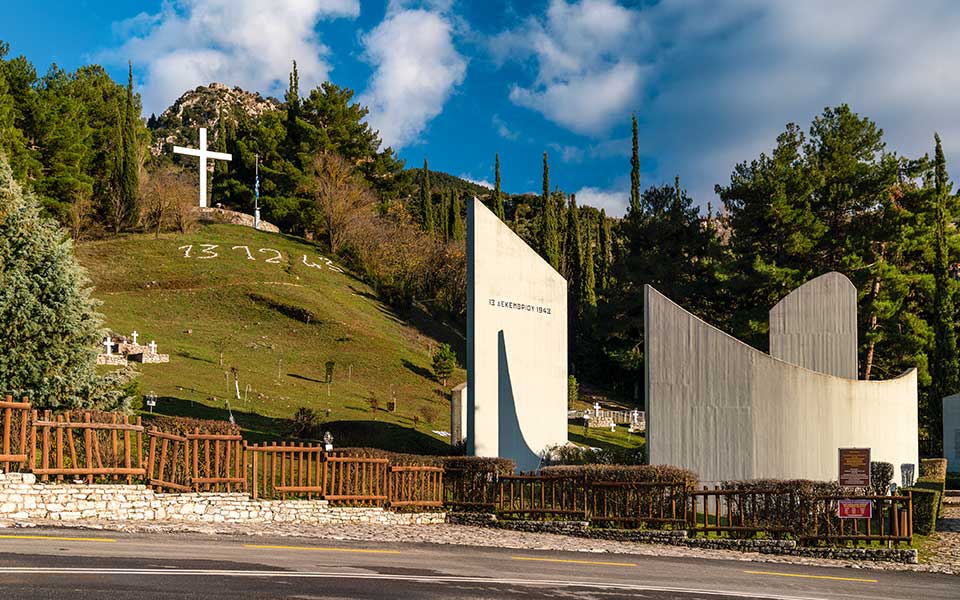
© Nicholas Mastoras
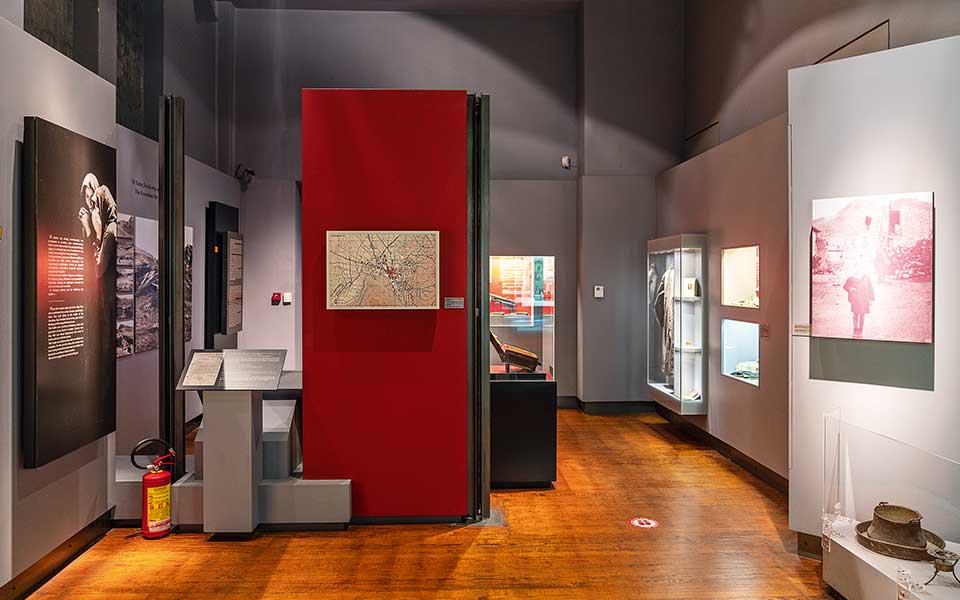
© Nicholas Mastoras
Encounters with history
The neoclassical building that housed the town’s elementary school was destroyed by fire on December 13th, 1943. It was on that day that the Germans gathered all the residents of the village together; they locked the women and children in the school and took all the men and the older boys to Kapi Hill, where they were executed – the Place of Sacrifice, where a solemn memorial stands today. The restored building now operates as a museum that tells the story of the event, including the tale of one man who survived the German bullets thanks to a borrowed watch, and exhibits personal mementos of the victims as well as photographs, video narratives and texts dating from before the war.
Info: Municipal Museum of the Kalavrytan Holocaust, Andrea Syngrou 1-5, Kalavryta, Tel. (+30) 26920.236.46, dmko.gr. Open daily except Monday, 09.00-16.00. Admission €3.

